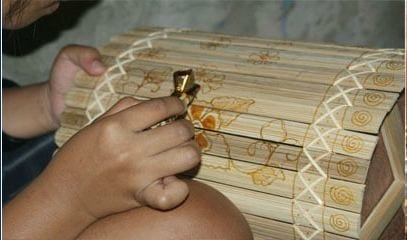
Batik is usually inscribed on fabric, but we can find it on wood media. DIY Province has two tourist villages producing wooden batik handicrafts namely Krebet, Pajangan, Bantul and Bobung Tourism Villages, Gunung Kidul. Both villages are known as producers of batik handicraft products made from wood. Even though this handicraft business has an impact on the economy of the local community, the production of wooden batik is still relying on seasonal market demand for export or sale in the country.
Environmental issues become a challenge for this wooden batik handicraft business in the future. Because the use of batik dyes and batik woodcraft waste contains chemicals so it needs to be addressed so that environmental issues do not become obstacles in expanding the range of these products abroad.
UGM Geography Faculty Lecturer, Dr. Dyah Widiyastuti, said that related to the batik wood processing waste, there has not been any environmental damage caused by the waste from the craft waste. Therefore, the coloring process of wooden batik containing hazardous chemicals needs to be managed through a waste treatment unit.
From the sample test results examined, there are 16 parameters of waste substances measured, but there are five substances that are considered to exceed the quality standard limits derived from liquid waste, namely COD (chemical oxygen demand), ammonia, BOD (biological oxygen demand), total dissolved solids, and total suspended solids. However, this waste generally decomposes in the soil.
![]()
![]()
![]()

